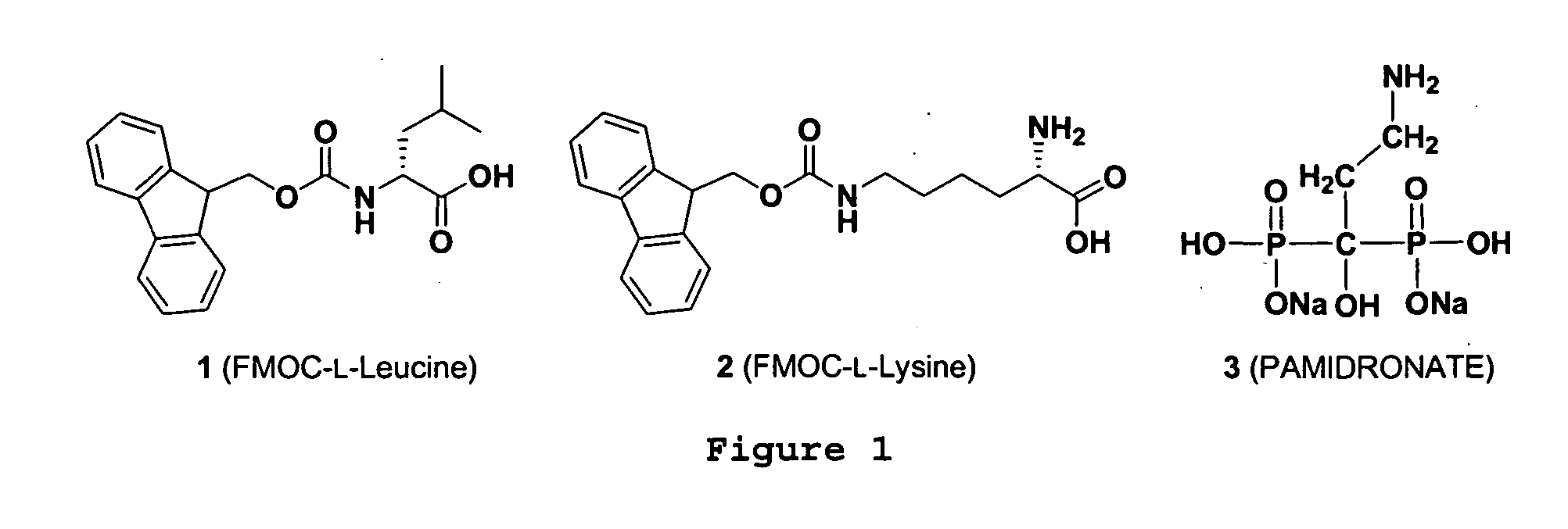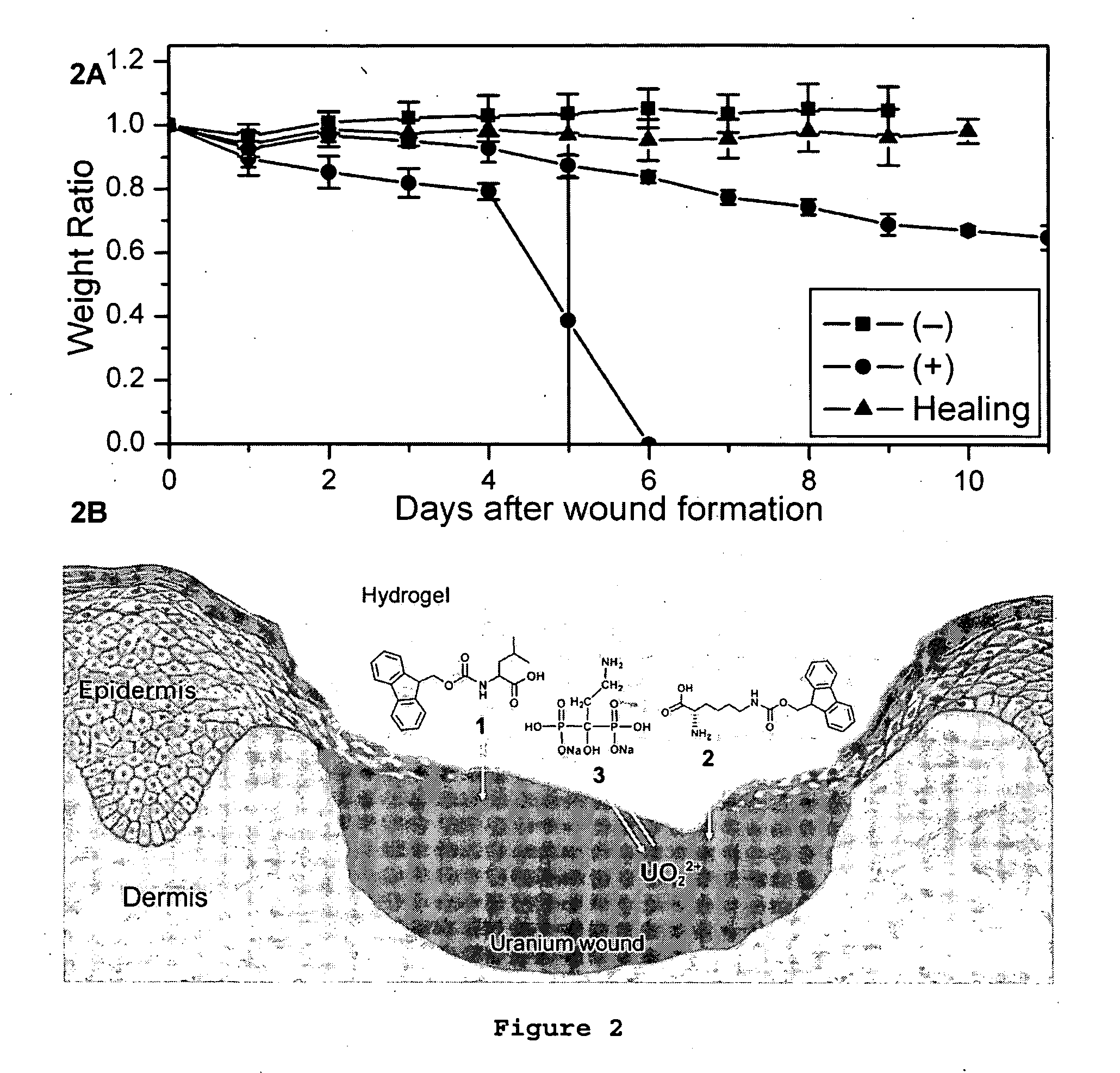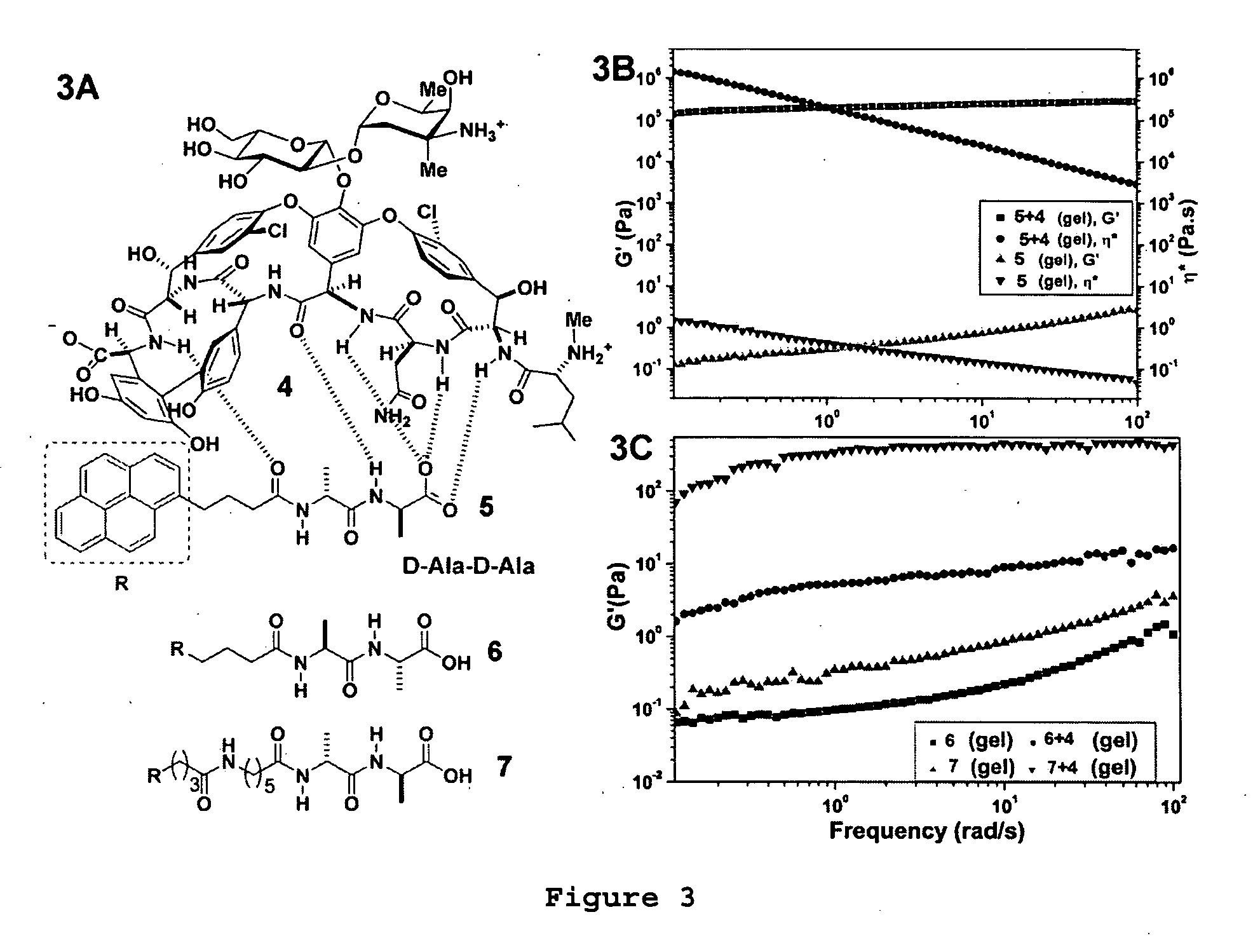Multifunctional supramolecular hydrogels as biomaterials
- Summary
- Abstract
- Description
- Claims
- Application Information
AI Technical Summary
Benefits of technology
Problems solved by technology
Method used
Image
Examples
example 1
[0038] To illustrate the biological activity of the supramolecular hydrogel of the present invention, the hydrogel, comprising the functional molecules shown in FIG. 1, was used to treat a uranium wound, which was created by scratching the skin on the back of mice and externally administering uranyl nitrate to the wound. The hydrogel was then topically administered to the wounds of the negative control group 20 minutes afterwards but not for the positive control group. The results of the experiment are shown in FIG. 2A. The mice in all groups exhibited initial weight loss the next day due to the effects of the wound. The negative control group recovered quickly from the wound after experiencing slight initial weight-loss and returned to normal growth on day 2. In contrast, the positive control group showed continuous weight-loss until expiration in about five days or 35% weight-loss over the next ten days. Thus, when the hydrogel was administered topically to the urany...
example 2
Noncovalent Crosslinking Supramolecular Hydrogels
[0041] Although in-situ polymerization allows enhanced stability of small-molecular gels, such a covalent cross-linking approach usually requires additional chemical synthesis, which alters the properties of the hydrogelators, and may result in the loss of biocompatibility and biodegradability. Accordingly, the use of molecular recognition (noncovalent crosslinking) to enhance the elasticity of the small-molecular hydrogels is preferred. For instance, the addition of a ligand into the mechanically-weak hydrogels of a derivative of the receptor leads to up to a million-fold increase in the storage modulus of the hydrogel. The term “noncovalent crosslinking” means that the crosslinking is realized by hydrogen bonding, hydrophobic forces, or ionic forces.
[0042] In one embodiment, vancomycin (Van) was selected as the ligand 4 and a D-Ala-D-Ala derivative was selected as the receptor 5 because of the well-established molecular recognitio...
example 3
Antibiotic Supramolecular Hydrogels
[0043]FIG. 4A shows the chemical structure of 8 (when R=pyrenyl), and FIG. 4B shows the picture of the hydrogel formed by adding 6.5 mg of 8 into 1.8 ml of water, corresponding to ˜0.36 wt % (2.2 mM) of the gelator and ˜23000 of water molecules / gelator molecule. 8 was unexpectedly potent (0.125 to 2 μg / ml, being 8 to 11 fold dilutions lower than the corresponding vancomycin) against VRE (2 vanA-positive Enterococcus faecalis, 4 vanA-positive E. faecium, 4 vanB-positive E. faecium). The strong tendency to self-assemble and the unexpected potency of 8 also lead us to speculate that 8 might aggregate into supramolecular structures at the cell surface when its local concentration is high
PUM
| Property | Measurement | Unit |
|---|---|---|
| Temperature | aaaaa | aaaaa |
| Temperature | aaaaa | aaaaa |
| Equivalent mass | aaaaa | aaaaa |
Abstract
Description
Claims
Application Information
 Login to View More
Login to View More - Generate Ideas
- Intellectual Property
- Life Sciences
- Materials
- Tech Scout
- Unparalleled Data Quality
- Higher Quality Content
- 60% Fewer Hallucinations
Browse by: Latest US Patents, China's latest patents, Technical Efficacy Thesaurus, Application Domain, Technology Topic, Popular Technical Reports.
© 2025 PatSnap. All rights reserved.Legal|Privacy policy|Modern Slavery Act Transparency Statement|Sitemap|About US| Contact US: help@patsnap.com



